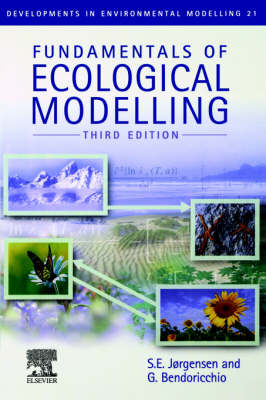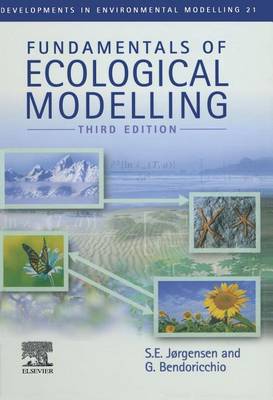Developments in Environmental Modelling
2 primary works • 3 total works
Book 23
Ecological Modelling: an Introduction is a textbook tailored for the last year of a bachelor study or the first year of a master study. Ecological Modelling is a very powerful tool in environmental management and ecological research and a course in ecological modelling ought therefore to be compulsory for all studies focusing on environmental management, environmental sciences and ecology. Ecological modelling requires both an introduction to the basic theory and practical computer exercises in the development of models. To facilitate the exercises, the book presents several illustrations, where an ecological modelling problem or task is presented and the solution is then given in detail. Several exercises are presented after each chapter, but the best exercises are of course that the students develop their own models focusing on problems that they have formulated and have particular interest to solve. The basic theory of ecological modelling is covered by the first seven chapters of the textbook, including 'how to go modelling' and an overview of the various model types applicable in ecological modelling.The following five chapters present details about the development and application of the five most applied model types in ecological modelling: bio-geo-chemical models, population dynamic models, ecotoxicological models, spatial models and structurally dynamic models.
For all five types, detailed and illustrative examples are presented. The examples are chosen to give the readers sufficient information to facilitate the development of their own model of the same type.
For all five types, detailed and illustrative examples are presented. The examples are chosen to give the readers sufficient information to facilitate the development of their own model of the same type.
Book 23
This is a thoroughly revised and updated edition of an authoritative introduction to ecological modelling. Sven Erik Jørgensen, Editor-in-Chief of the journal Ecological Modelling, and Giuseppe Bendoricchio, Professor of Environmental Modelling at the University of Padova, Italy, offer compelling insights into the subject. This volume explains the concepts and processes involved in ecological modelling, presents the latest developments in the field and provides readers with the tools to construct their own models.
The Third Edition features:
• A detailed discussion and step-by-step outline of the modelling procedure.
• An account of different model types including overview tables, examples and illustrations.
• A comprehensive presentation of the submodels and unit processes used in modelling.
• In-depth descriptions of the latest modelling techniques.
• Structured exercises at the end of each chapter.
• Three mathematical appendices and a subject index.
This practical and proven book very effectively combines the theory, methodology and applications of ecological modelling. The new edition is an essential, up-to-date guide to a rapidly growing field.
The Third Edition features:
• A detailed discussion and step-by-step outline of the modelling procedure.
• An account of different model types including overview tables, examples and illustrations.
• A comprehensive presentation of the submodels and unit processes used in modelling.
• In-depth descriptions of the latest modelling techniques.
• Structured exercises at the end of each chapter.
• Three mathematical appendices and a subject index.
This practical and proven book very effectively combines the theory, methodology and applications of ecological modelling. The new edition is an essential, up-to-date guide to a rapidly growing field.
Very few books have been published to-date which provide an introduction to the topic of ecological modelling. Although many have been published on ecological modelling itself, it was necessary for the reader to already have an understanding of the field, or at least some experience in the development of ecological models, in order for him/her to be able to make full use of them. This easy-to-understand book aims to bridge this gap. The reader needs only an understanding of the fundamentals of environmental problems and ecology, although it is assumed that he/she has a fundamental knowledge of differential equations and matrix calculations. This monograph provides on the one hand an overview of the field and on the other an opportunity for the reader to develop his/her own models. The book discusses the modelling procedure in detail and gives a step-by-step presentation of the development of models. Advantages and shortcomings of each step are discussed and simple examples are used to illustrate all the steps. Most model types are presented by use of theory, overview tables on applications, complexity, examples and illustrations. Both simple and complex models are described.


